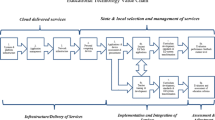Abstract
The Panel on Educational Technology was organized in April 1995 under the auspices of the President's Committee of Advisers on Science and Technology (PCAST) to provide advice to the President on matters related to the application of information technologies to K–12 education in the United States. Its findings and recommendations were set forth in March 1997 in the Report to the President on the Use of Technology to Strengthen K–12 Education in the United States. This report was based on a review of the research literature and on written submissions and oral briefings from a number of academic and industrial researchers, practicing educators, software developers, governmental agencies, and professional and industry organizations involved in various ways with the application of technology to education. Its most important finding is that a large-scale program of rigorous, systematic research on education in general and educational technology in particular will ultimately prove necessary to ensure both the efficacy and cost-effectiveness of technology use within our nation's K–12 schools. Finding that less than 0.1 percent of our nation's expenditures for elementary and secondary education are currently invested to determine which educational techniques actually work, and to find ways to improve them—an extremely low level relative to comparable ratios within the private sector—the Panel recommended that this figure be increased over a period of several years to at least 0.5 percent, and sustained at that level on an ongoing basis. Further, because no one state, municipality, or private firm could hope to capture more than a small fraction of the benefits associated with a significant advance in our understanding of how best to educate K–12 students, the Panel concluded that such funding will have to be provided largely at the federal level in order to avoid a systematic underinvestment (attributable to a classical form of economic externality) relative to the level that would be optimal for the nation as a whole. This paper originally appeared as Section 8 of the report.
Similar content being viewed by others
REFERENCES
American Psychological Association (1982). Ethical Principles in the Conduct of Research with Human Participants, Washington, D.C.
Atkinson, Richard C., and Jackson, Gregg B. (Eds.), (1992). Research and Educational Reform: Roles for the Office of Educational Research and Improvement, National Research Council, Washington, D.C.
Bangert-Drowns, R. L. (1992). The Word Processor as an Instructional Tool, School Science and Mathematics, pp. 69-93.
Cognition and Technology Group at Vanderbilt University, (1992). The Jasper Series as an Example of Anchored Instruction: Theory, Program Description and Assessment Data. Educational Psychologist 27: 291-315.
Dede, C. (1995). Written statement submitted to the PCAST Panel on Educational Technology, p. 2.
Gardner, C. M., Sirnmons, P. E., and Simpson, R. D. (1992). The Effects of CAI and Hands-On Activities on Elementary Students' Attitude and Weather Knowledge, School Science and Mathematics, 92: 334-336.
Glass, G. V., McGaw, B., and Smith, M. L. (1981). Meta-Analysis in Social Research, Sage Publications, Beverly Hills, California.
Hawkins, Jan, (1996). Dilemmas, in Education and Technology: Reflections on Computing in Classrooms, C. Fisher, D. C. Dwyer, and K. Yokom (Eds.), Jossey-Bass, San Francisco.
Kulik, J. A. (1994). Meta-Analytic Studies of Findings on Computer-Based Instruction, in Technology Assessment in Education and Training. E. L. Baker and H. F. O'Neil (Eds.), Lawrence Erlbaum, Hillsdale, New Jersey.
Means, B., and Olsen, K. (1995). Technology's Role in Educational Reform, in U.S. Department of Education Report, Office of Educational Research and Improvement, Washington, D.C.
National Academy of Education (1991). National Academy of Education, Research and the Renewal of Education. Author, Stanford, California.
Reil, M. (1990). Cooperative Learning Across Classrooms In Electronic Learning Circles, Instructional Sciences 19: 445-466.
Slavin, R. E. (1988). Best-Evidence Synthesis: An Alternative to Meta-Analytic and Traditional Reviews, in Evaluation Studies Review Yearbook, Vol. 12. W. R. Shadish and C. S. Reichart (Eds.), Sage Publications, London.
U.S. General Accounting Office (1987). Education Information: Changes in Funds and Priorities Have Affected Production and Quality, Washington, D.C. as reported in National Academy of Education, Research and the Renewal of Education, National Academy of Education, Stanford, California.
Author information
Authors and Affiliations
Rights and permissions
About this article
Cite this article
Shaw, D.E., Becker, H.J., Bransford, J.D. et al. Report to the President on the Use of Technology to Strengthen K–12 Education in the United States: Findings Related to Research and Evaluation. Journal of Science Education and Technology 7, 115–126 (1998). https://doi.org/10.1023/A:1022539822660
Issue Date:
DOI: https://doi.org/10.1023/A:1022539822660




